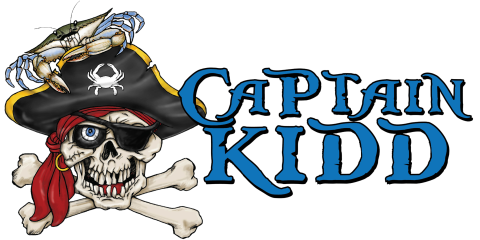Crabbing Hilton Head the Gullah Way
🦀 The History of Gullah Crabbing Traditions in the Lowcountry
Hilton Head Island is known for its beautiful waterways, scenic beaches, and abundant wildlife—but one of its most meaningful and enduring features is the legacy of the Gullah people. Their traditions, stories, and knowledge of the land and sea have shaped generations of Lowcountry life, including the art of crabbing.
If you’ve ever caught a blue crab with a chicken neck tied to a string, you’ve participated in a Gullah tradition that has been passed down through families for centuries. Let’s take a closer look at the roots of Gullah crabbing, how it came to be, and why it’s still an important part of Hilton Head culture today.
🌍 Who Are the Gullah People?
The Gullah (also known as Geechee in some areas) are descendants of enslaved West Africans brought to the coastal regions of South Carolina, Georgia, and the Sea Islands during the 1700s and 1800s. Due to the isolation of these island communities, the Gullah people preserved much of their African language, customs, and foodways—blending them with new influences from the American South.
Today, the Gullah culture is recognized as one of the most distinct and vibrant African American cultures in the United States, and Hilton Head Island remains a key part of its heritage.
🦀 Gullah Crabbing: A Simple, Effective Tradition
Long before modern traps and crab pots, Gullah families used simple materials and smart techniques to catch blue crabs in the tidal creeks and marshes of the Lowcountry. The most iconic method? A piece of string or twine tied to a chicken neck, lowered into the water by hand or with a stick.
Here’s how it works:
-
Bait with chicken necks or other leftovers.
-
Drop the line into shallow water, usually near marsh grass or oyster beds.
-
Wait for a tug, then slowly pull up the line.
-
Scoop the crab with a net before it lets go.
This hands-on method didn’t require fancy equipment—just patience, skill, and knowledge of the tides and crab behavior. It was perfect for families, allowing children to help while passing down knowledge from one generation to the next.
🌱 Sustainability & Community
Crabbing was never just for sport. It was an important source of food and livelihood for Gullah families. The process taught children about timing, respect for nature, and seasonal rhythms of the salt marsh. Often, crabs were boiled and seasoned with local spices for large family meals or neighborhood gatherings.
Many Gullah people still live in Hilton Head’s historic communities like Mitchelville and Spanish Wells, and the values of sustainability and tradition remain central to their way of life.
🛶 Gullah Influence on Today’s Crabbing Tours
Modern crabbing tours in Hilton Head—like those offered on the Captain Kidd crabbing boat—still follow this time-honored Gullah method. Guests use chicken necks on lines to catch crabs in the same shallow tidal waters where Gullah families have been crabbing for generations.
These tours provide more than just family fun—they are a living tribute to Gullah heritage, giving visitors a hands-on way to experience an authentic piece of Lowcountry culture.
🎓 Why Gullah Crabbing Traditions Matter
In a world where convenience often replaces connection, Gullah crabbing traditions remind us of the power of community, simplicity, and respect for nature. They teach patience, observation, and appreciation for the land and water that sustain us.
Preserving these customs—and sharing them with others—not only honors the past but helps ensure that Gullah history remains a living, thriving part of Hilton Head Island’s future.
📌 Final Thoughts
The next time you lower a baited line into the water or watch a blue crab tug at your chicken neck, remember: you’re doing more than crabbing. You’re participating in a centuries-old Gullah tradition that continues to shape the soul of the Lowcountry.
